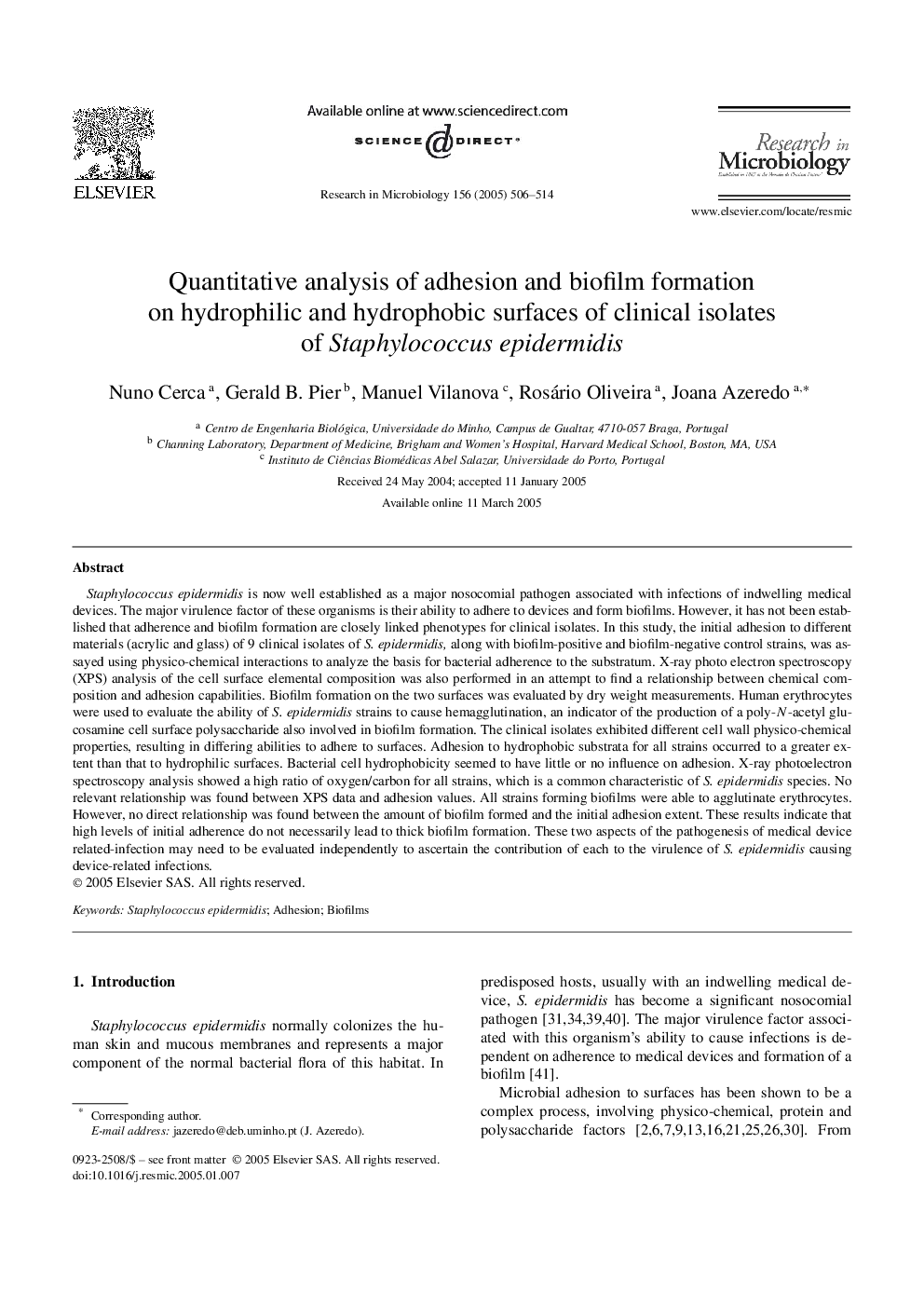| Article ID | Journal | Published Year | Pages | File Type |
|---|---|---|---|---|
| 9440146 | Research in Microbiology | 2005 | 9 Pages |
Abstract
Staphylococcus epidermidis is now well established as a major nosocomial pathogen associated with infections of indwelling medical devices. The major virulence factor of these organisms is their ability to adhere to devices and form biofilms. However, it has not been established that adherence and biofilm formation are closely linked phenotypes for clinical isolates. In this study, the initial adhesion to different materials (acrylic and glass) of 9 clinical isolates of S. epidermidis, along with biofilm-positive and biofilm-negative control strains, was assayed using physico-chemical interactions to analyze the basis for bacterial adherence to the substratum. X-ray photo electron spectroscopy (XPS) analysis of the cell surface elemental composition was also performed in an attempt to find a relationship between chemical composition and adhesion capabilities. Biofilm formation on the two surfaces was evaluated by dry weight measurements. Human erythrocytes were used to evaluate the ability of S. epidermidis strains to cause hemagglutination, an indicator of the production of a poly-N-acetyl glucosamine cell surface polysaccharide also involved in biofilm formation. The clinical isolates exhibited different cell wall physico-chemical properties, resulting in differing abilities to adhere to surfaces. Adhesion to hydrophobic substrata for all strains occurred to a greater extent than that to hydrophilic surfaces. Bacterial cell hydrophobicity seemed to have little or no influence on adhesion. X-ray photoelectron spectroscopy analysis showed a high ratio of oxygen/carbon for all strains, which is a common characteristic of S. epidermidis species. No relevant relationship was found between XPS data and adhesion values. All strains forming biofilms were able to agglutinate erythrocytes. However, no direct relationship was found between the amount of biofilm formed and the initial adhesion extent. These results indicate that high levels of initial adherence do not necessarily lead to thick biofilm formation. These two aspects of the pathogenesis of medical device related-infection may need to be evaluated independently to ascertain the contribution of each to the virulence of S. epidermidis causing device-related infections.
Related Topics
Life Sciences
Immunology and Microbiology
Applied Microbiology and Biotechnology
Authors
Nuno Cerca, Gerald B. Pier, Manuel Vilanova, Rosário Oliveira, Joana Azeredo,
